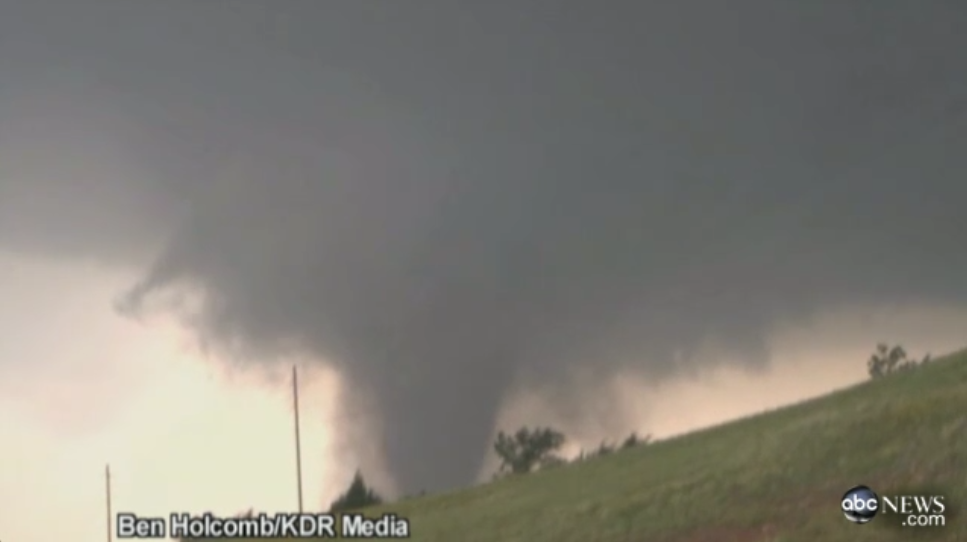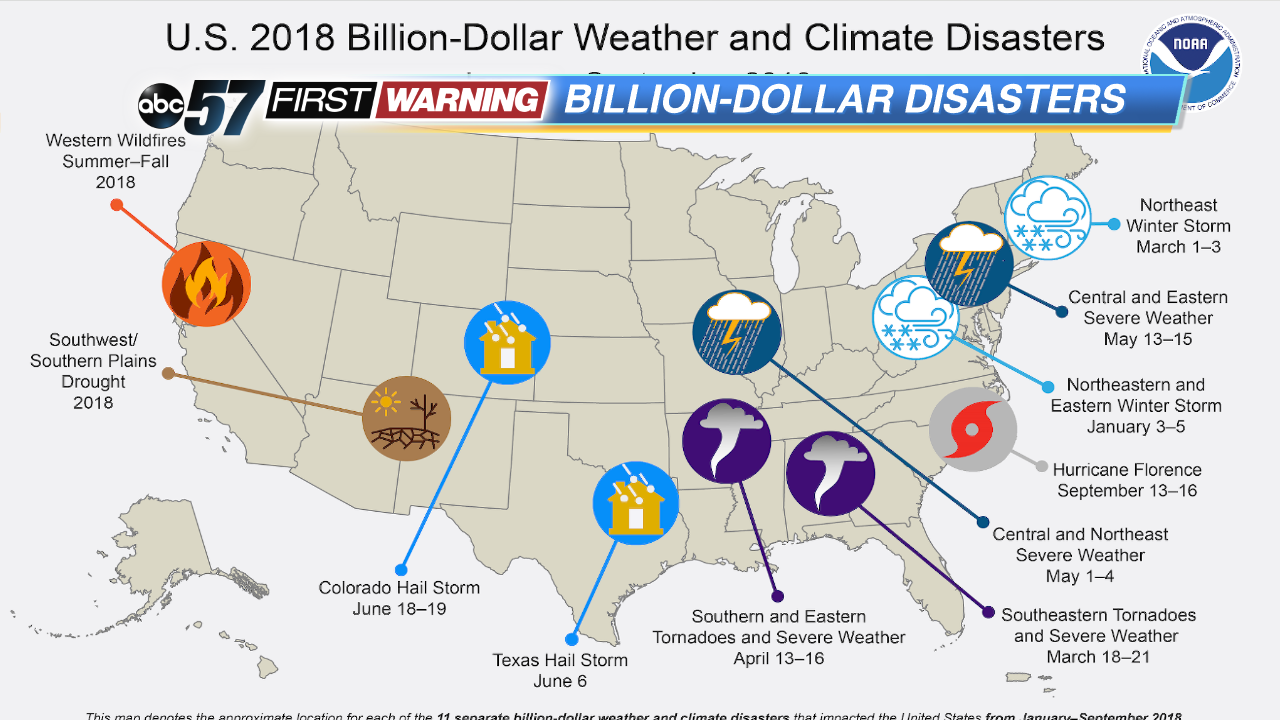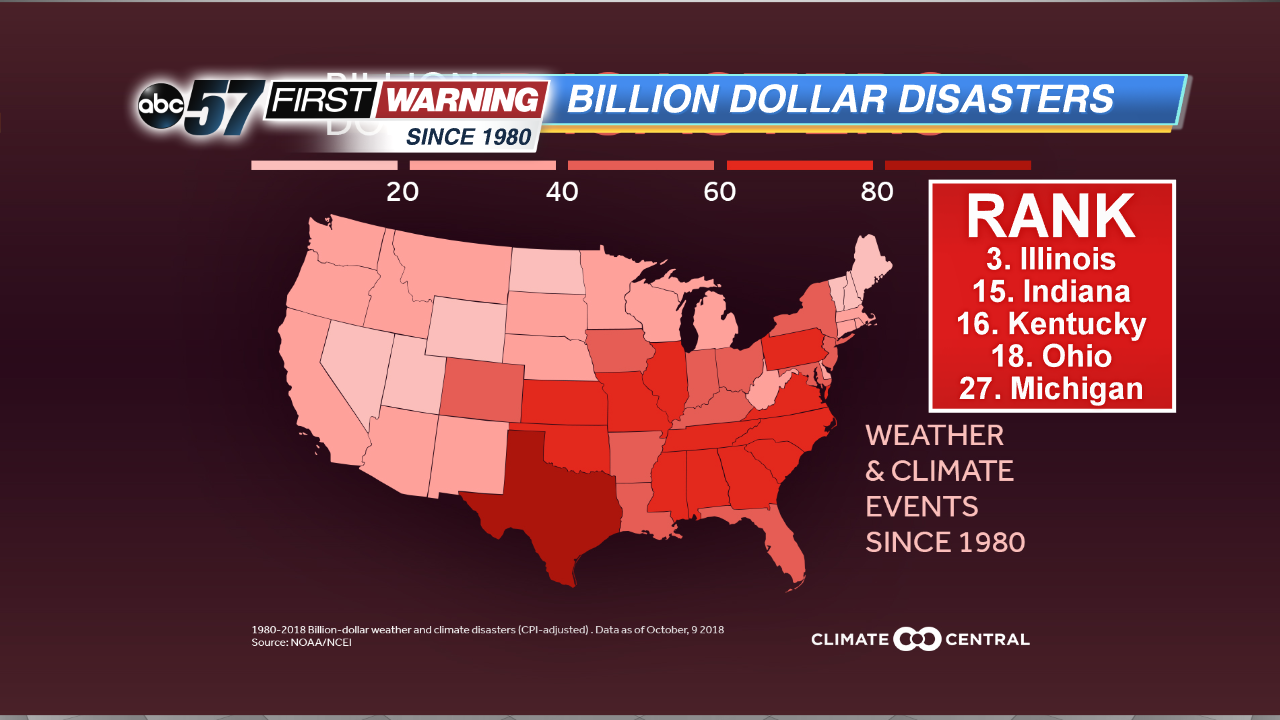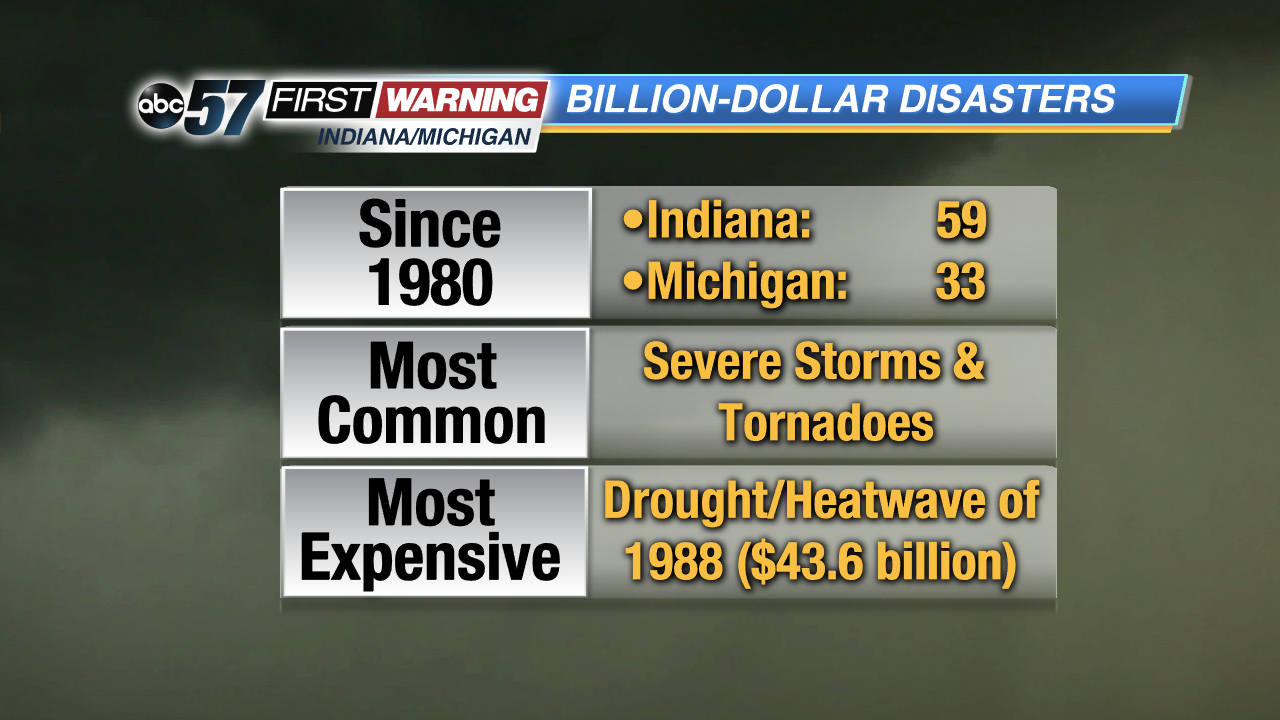Billion-dollar disasters on the increase in United States
Posted: Dec 6, 2018 11:38 AM EST
As the atmosphere continues to warm, we are seeing more and more billion-dollar weather and climate disasters in the United States. Thru September, there had already been 11 such events in the Lower 48 according to NOAA's National Centers for Environmental Information. This number will likely rise once the final calculations are completed for Hurricane Michael and the California wildfires. If these two disasters wind up being added, we will have a total of 13 billion-dollar disasters for the year, making it one of the worst years in U.S. history, behind only 2017, 2011 and 2016. For perspective, the average year sees about six billion-dollar disasters.
So what exactly are these billion-dollar disasters? They range from severe weather and tornadoes to wildfires, droughts, hail storms, hurricanes, winter storms, freezes, and more. Most years feature some sort of combination of most of these disasters. Of course, some years see more than others. And these disasters aren't evenly dispersed each year. For example, some years may not have a billion-dollar freeze event, but two wildfire events and three hail storm events. It just depends on the year.
What's clear, though, is the overall rise in the number of billion-dollar weather and climate disasters over the last decade or so. The seven years with the most billion-dollar disasters have all come in the last decade. And, believe it or not, Michigan and Indiana have seen numerous such events dating back to 1980. Of the 238 disasters to affect the United States, Michigan has been impacted by 33 of them; Indiana has been impacted by 59 of them. That ranks Michigan at 27th-most in the U.S. and Indiana at 15th-most. Something to keep in mind is that this does not mean Indiana has seen 59 billion-dollar disasters all to itself; rather, parts of the state have been impacted by a disaster that spanned multiple states. For example, Hurricane Ike was a billion-dollar disaster, and it did impact parts of Southern Indiana. As a result, Hurricane Ike counts for one of those 59 to impact Indiana.
The states to be affect by the most billion-dollar weather and climate disasters include the following:
1. Texas: 105
2. North Carolina: 75
3. Illinois, Oklahoma, Alabama, Georgia: 74
7. Mississippi: 70
8. Tennessee: 68
9. Missouri: 67
10. Virginia: 66
For us here in Indiana and Michigan, the most common types of billion-dollar disasters are severe thunderstorms and tornadoes. More than half of our significant weather disasters are related to severe weather. Winter storms and droughts/heatwaves are second and third, respectively. The least common of the disasters for Indiana and Michigan are tropical systems and wildfires.


















